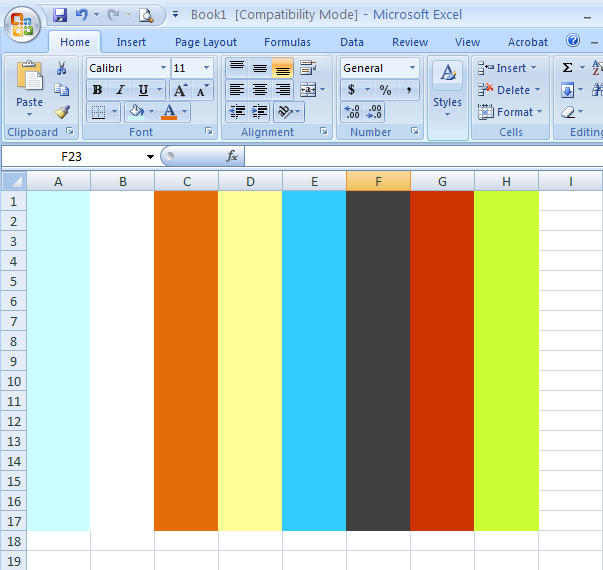Excel at art

"Vimeo Waiting," Microsoft Excel, 2010
In 1963 Josef Albers published a book on color theory, and since then color — “pure” color, the mathematical hue — has been the rage in abstract painting and design. In the old (c. ’70 – ’80s) days, painters spent months covering a canvas monochrome, blending, blending away the brush marks. The human hand was a horrible thing, corrupted with subjectively. An MFA in Painting student today is still prone to sit hours in front of their canvas, lamenting over which color to juxtapose another color with, and while I respect that solemn responsibility, I prefer the quick MS excel fix, take Vimeo’s default ‘no signal’ screen.
Vimeo teaches me something about writing
Block Tests 01 from Dylan Hayes on Vimeo.
This person has taken Street Fighter and broken it down to its simplest shapes.
So, this and fiction. I’m not just thinking about minimalism v. maximalism here. I’m curious about breaking a story down to a simple shape. I’m thinking about Stephen Dixon’s amazing story “Said,” in which the dialogue tags remain, but all the dialogue has been removed. A pair of lines from the story (which, sadly, I don’t have in front of me) can be as simple as:
He said.
She said.
The actions, free of dialogue, remain.
I’ve been writing a story in nothing but dialogue for the past couple of weeks, and trying to figure out what, when you strip away the other constituent parts of a story, needs to remain.
This is what I think needs to remain. I came up with this watching that video.
The story must, no matter what you take away, move. In the video, Blanka and Ken continue to contend, lacking arms, lacking faces. They continue to move. In Dixon’s story, he says, she says. We don’t have anything other than context to interpret what would happen before or after the dialogue tags.
So. Move. Maybe? Just a guess, I suppose.
